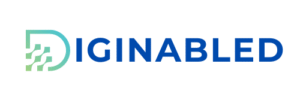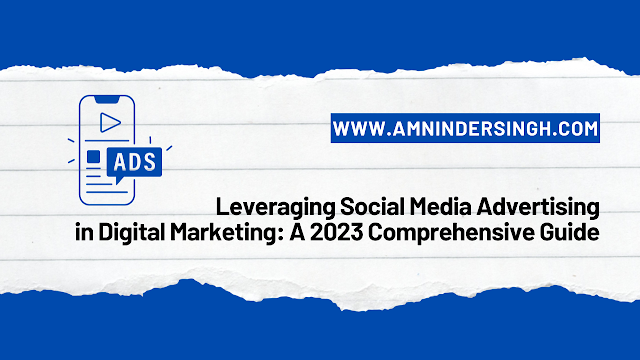Social media advertising has revolutionized the digital marketing landscape, offering businesses unparalleled opportunities to connect with highly targeted audiences and achieve various marketing objectives.
|
In this comprehensive guide, you will be exploring the strategies, tactics, and best practices for effectively leveraging social media advertising in your digital marketing efforts.
Understanding Social Media Advertising
What is Social Media Advertising?
Social media advertising involves paid promotions on various social media platforms to reach specific audiences. It allows businesses to display ads in users’ feeds, stories, or other placements, targeting users based on demographics, interests, and behaviors.
The next is benefits of social media advertising.
Top 5 Benefits of Social Media Advertising
Precise Targeting: Reach the right audience with granular targeting options.
Increased Visibility: Expand your brand’s reach beyond organic methods.
Measurable Results: Track key performance indicators (KPIs) and measure ROI.
Versatile Ad Formats: Utilize diverse ad formats, including images, videos, carousels, and more.
Advanced Analytics: Access in-depth insights to refine your strategies.
The next is to select the right social media platforms for your brand.
Selecting the Right Social Media Platforms
Platform Selection
Choose social media platforms that align with your target audience and marketing objectives. Common platforms for advertising include Facebook, Instagram, Twitter, LinkedIn, Pinterest, TikTok, and Snapchat.
But you have to understand strength of each platform as well.
Platform Strengths
Understand each platform’s strengths:
Facebook: Offers broad demographic targeting and a robust ad manager.
Instagram: Ideal for visually appealing content and reaching younger audiences.
LinkedIn: Suited for B2B marketing and professional networking.
Twitter: Excellent for real-time updates and trending conversations.
Pinterest: Ideal for visual discovery and e-commerce.
TikTok: Ideal for short-form video content and viral challenges.
Youtube : Ideal for tutorial form videos.
After knowing about the platform strengths and choosing the relevant social media platform, you will be crafting effective ad campaigns.
Crafting Effective Ad Campaigns
Crafting effective ad campaigns involves defining objectives, audience targeting, ad creative, ad formats, budgeting and bidding.
Defining Objectives
Clearly define your campaign objectives, whether it’s brand awareness, website traffic, lead generation, conversions, or app installs.
Audience Targeting
Leverage platform-specific audience targeting options to reach the most relevant audience based on demographics, interests, behaviors, and location.
Ad Creative
Create compelling ad creatives that resonate with your audience. Utilize eye-catching visuals, persuasive ad copy, and strong Calls to Action (CTAs).
Ad Formats
Leverage various ad formats to match your content with the platform’s strengths. These can include image ads, video ads, carousel ads, story ads, and more.
Budgeting and Bidding
Set a clear budget for your campaign and choose a bidding strategy aligned with your objectives, such as Cost Per Click (CPC) or Cost Per Mille (CPM). For brand awareness, CPM is better than CPC. For conversions, CPC is better than CPM.
Monitoring and Optimization
Monitoring and Optimization involves regular monitoring then A/B testing and eventually campaign adjustments based on your findings from the monitoring sessions.
Regular Monitoring
Frequently monitor your ad campaign’s performance metrics, including Click-Through Rates (CTR), Conversion Rates, Ad Spend, and Return on Investment (ROI).
A/B Testing
Conduct A/B tests to optimize ad elements, such as headlines, visuals, ad copy, and audience segments, based on data-driven insights.
Campaign Adjustments
Based on performance data, adjust your ad campaigns by reallocating budget, fine-tuning targeting criteria, or refreshing ad creatives to maintain effectiveness.
Measuring ROI and Analytics
Key Metrics
Track essential metrics such as CTR, Conversion Rate, Cost Per Conversion, Return on Ad Spend (ROAS), and Ad Relevance Score to evaluate campaign success.
Analytics Tools
Leverage social media platform analytics, Google Analytics, and third-party analytics tools to gain comprehensive insights into your ad performance.
Compliance and Ethics
Data Privacy
Adhere to data privacy regulations, such as GDPR and CCPA, to ensure that user data is handled transparently and securely.
Authenticity
Maintain transparency in your advertising efforts. Clearly label sponsored content, avoid misleading claims, and adhere to platform advertising policies.
Staying Updated
Platform Changes
Stay informed about changes in social media platforms’ algorithms, ad formats, and targeting options.
Industry Trends
Keep abreast of emerging trends in social media advertising, such as influencer partnerships, user-generated content (UGC), and interactive ad formats.
Social Media Advertising Guide : Conclusion
Social media advertising is a dynamic and powerful tool for digital marketers. By selecting the right platforms, crafting compelling ad campaigns, monitoring performance, and adhering to ethical standards, businesses can effectively leverage social media advertising to achieve their marketing goals and drive growth.
Continuous learning and adaptation to evolving trends are essential for long-term success in this ever-changing landscape.
This article is part of our social media marketing smm module.
Module 6: Social Media Marketing
6.1 In-Depth Examination of Prominent Social Media Platforms
6.2 Devise a Robust Social Media Content Strategy
6.3 Leverage Social Media Advertising
6.4 Nurture Online Communities
6.5 Extract Insights Through Social Media Analytics


